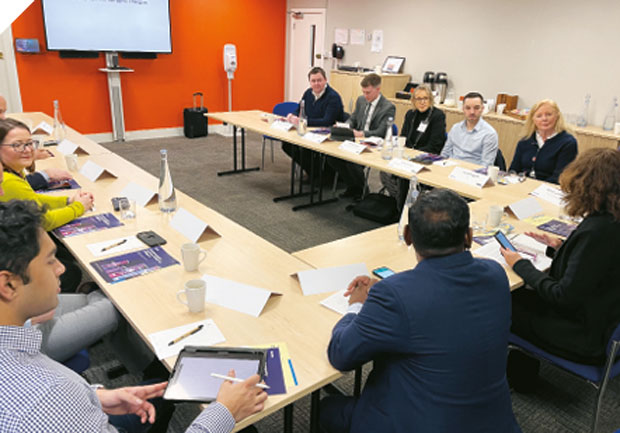CAFM ISSUES
Turning to issues regarding the use of existing CAFM systems. According to our panellists, too many systems are poorly set up and won’t connect with other tools or systems. Within larger organisations many are not making the best use of their software, with communication being a particular issue. For example, there is often a disconnect between an issue being reported on a help desk and the problem being resolved to everyone’s satisfaction or knowledge.
Prabhu Ramachandran wondered why a CAFM system couldn’t operate like a tenant app?
“With this approach,” he said, “I can just take a picture, raise a request and it automatically finds who’s the vendor to be assigned to resolve that issue.
“In that scenario we connect with people, by allowing them to interact with the CAFM system through simple user-friendly apps. We can even integrate with WhatsApp, where people can send a message which can automatically create tickets. This is easy to do and doesn’t need a lot of investment, yet they bring a lot more value immediately.
“Once you run the system for a couple of years, you get behavioural patterns, which tells you which building is performing better. What kind of problems are recurring. Which third party contractor is performing best.”
There are also issues around who exactly owns the data produced by a CAFM system. Is it the FM supplier or their client? A panellist recalled an issue that arose when they moved over to a new contractor only to discover the previous data wasn’t as accurate as it should have been, leaving the team a lot more work to do in trying to gather asset verification.
Ryan Yates, Senior Account Executive, Facilio explained: “More often we’re seeing people come to us with this issue where the FM service providers own the CAFM system and they realise they’ve been doing this wrong for 20 years by losing important data where they should be able to own it and have that historical record.”
Another important concern for our panel was having access to too much data coming from different sources and being unable to determine what is ‘the single source of truth’. Said one: “Do you really need that device to spit out information every minute? Can you reduce this down to half an hour or until something really drastic happens?”
This requires the system to make reporting easier, yet there were complaints: “The thing we hear more than anything is that we have a CAFM but it’s not doing everything it is supposed to – I still have to pick up the phone, look into Excel sheets, send emails.”
Allied with this is the risk of investing in the latest ‘bells and whistles’ which don’t actually offer what the organisation needs. Commented a supplier panellist: “Technology’s great and we want the latest and greatest but there’s always a balance in requirements as it needs to actually deliver something that’s helping you achieve net zero, while reducing costs.
“We see it time and time again, where I think a lot of clients will jump to the latest technology and we might have to come in and burst that bubble by saying, you don’t need it, there’s probably a better way to do things.”
BUILDING USERS
A difference between those who use the building and how the Building Management System (BMS) operates, is another issue, with the group asking how you can proactively fix problems in buildings while also handling the conflicting needs of end users. Said a panellist: “Your system should help your maintenance engineers to troubleshoot and identify problems, but then the building users need to be aware that a system is working as it was designed – even if the end user is frustrated because the temperature is too high or too low.”
Another added: “Your BMS engineer is under pressure to correct [the temperature] to the building users’ comfort, but actually if you do that, you’re potentially haemorrhaging energy, and you’re not working the build into its design.”
Over complexity is a big issue, agreed the group, with one participant recalling their visit to a landmark office building where the Smart Technology was so complex that end users couldn’t control everything in the room, resulting in having to call a building manager in to sort it out.
For Ramachandran: “My personal wish list would be to make the leaders who are choosing and paying for the CAFM actually use it, but a lot of times that doesn’t happen. But if they did, they will get information on how the buildings across their portfolio are performing and how end users are experiencing it. That’s the real value of a CAFM platform – when leaders have that information and they can actually take better action.”





